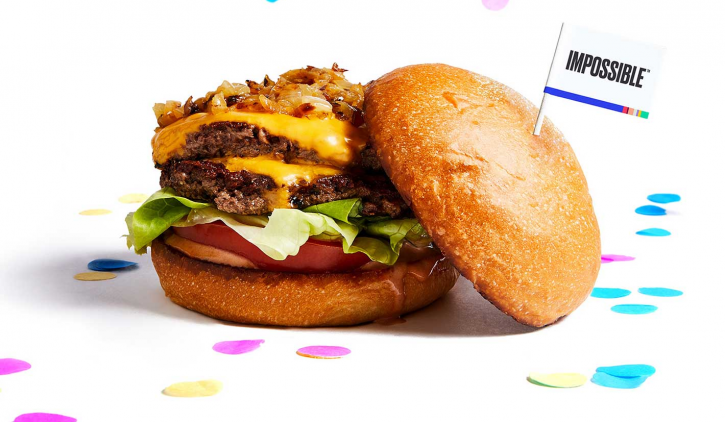
Plant-based is a hot trend in food marketing right now, but how is it playing out in foodservice, which ingredients are trending on menus, and what marketing resonates the best with diners?
Speaking at the Plant Based Food Innovation Summit at Mattson’s new HQ in Foster City, CA on Tuesday, Colleen McClellan, director, client solutions, at foodservice market researcher Datassential, said some operators are actively using the terms ‘plant-based’ or ‘plant-forward’ on menus.
Others prefer not to dwell on a dish’s animal-free credentials but focus instead on calling out specific ingredients (maitake, chia, fava bean, spirulina), buzzwords (‘super food bowl,’ ‘super salad’) or cuisine types (Ethiopian, Indian) where the dish in question just happens to be vegan or vegetarian, she said.
“Vegan foods aren’t just for vegans anymore, but plant-based must be crave-worthy,” added McClellan, showing an uninspiring picture of a generic garden-type-burger on a restaurant menu and comparing it with pictures of the new plant-based Beyond Burger and the Impossible Burger, plus Sonic’s blended burger (made with a blend of beef and mushrooms): thick, juicy, meaty-looking burgers sitting next to their 100% meat-based counterparts.
“55% of consumers say they love steak, only 5% love tofu.”
And while consumer survey data by Datassential and Mattson suggests that consumers believe plantbased is healthier, savvy restaurant operators featuring the latest generation of meat-free burgers (which are targeting meat eaters and vegans/vegetarians alike) are not shouting about health – or saving the planet – on menus, she said.
“It’s about deliciousness. The words vegan and vegetarian are the kiss of death for some consumers. »
70% of consumers are trying to increase their fruit and veggie intake
That said, while many of the column inches devoted to plant-based foods tend to focus on meat, egg and dairy analogs, to many consumers, plant-based is mainly about eating more fruits and veggies, she said, noting that around 70% of consumers in surveys will typically say they are trying to consume more.
“70% are actively trying to increase fruit and veggies; they just can’t figure out how to do it.”
Some chefs are also treating veggies like meat, offering cauliflower ‘steaks’ and ‘braised’ mushrooms or adopting terms used in butchery to talk about ‘meaty’ plants such as jackfruit, she added.
Datassential research also shows that purchase intent for some plant-based center-plate items increases when restaurateurs adopt more ‘meaty’ terminology on mock menus, added Mattson president and chief innovation officer Barb Stuckey.
« The more meat and chicken and fish vernacular you use the higher the scores, things like Applewood Smoked Porto’house with chard, Hot “Chicken” Fried Steak with avocado puree, Tomato “Tuna” with pickled ginger pears… it’s about anchoring people with things that they love. »

Source: Datassential_ Plant-based only works if its crave-worthy
